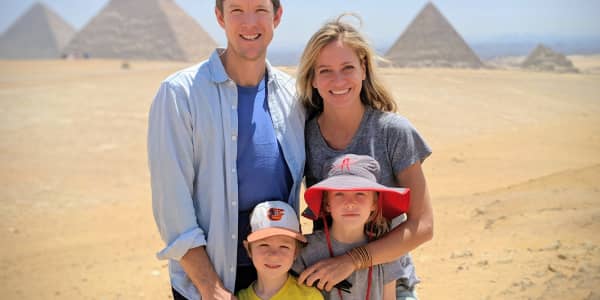Kerala is a beautiful, tropical place — a long, slim slice of land on the southwestern tip of India.
It's also a great location to experience the subcontinent as a solo traveler.
Kerala has a reputation for being more relaxed than other parts of India. The old town of Kochi, the state capital, is a laid-back city that is good for exploring and shopping. The backwaters, a network of lakes and rivers, provide a relaxing way to see India's serene side. The mountains of the Western Ghats are an opportunity to see a wild and untouched part of the country.
Some of the travelers I met in Kerala were taking each unplanned day as it came — but going to India as a lone woman, I preferred to be more organized.
Touching down at 3 a.m.
Arriving at Trivandrum International Airport at around 3 a.m., I was immediately struck by the wonderful smell outside. It felt like all of Kerala's tropical life combined to create a warm and heady perfume, a familiar scent that reminded me of past trips to Nepal and Sri Lanka.
Landing in the middle of the night made for a cooler and quicker taxi ride to my guesthouse. It also meant I got to see a couple of festivals along the way, with music blaring and colored lights strung along the roadside.
I started my trip in the beachside town of Varkala, a place popular with photo-taking Westerners and locals scattering the ashes of their loved ones. The combination may seem curious, but it seemed to work as Indians arrived during the morning Hindu ceremonies, while tourists congregated in the afternoons.
I opted to stay at Soul & Surf, a clifftop guesthouse in the south of Varkala, where yoga, surf lessons and breakfast came as a package. A handwritten note greeted me as I arrived at dawn, inviting me to surf at 6.30 a.m. or eat breakfast around 10 a.m.
I chose the latter option and later headed to the cafe where people shared post-surf chat on several long tables in a shaded garden area. I met two women, and over the next few days we did our own thing during the day and met up in the evenings to compare notes at one of Varkala's clifftop restaurants.
Surfing and style decisions
Soul & Surf runs early-morning surf sessions, which — as a total beginner — I found to be excellent.
Each day, we piled our boards on the top of a Jeep or the guesthouse's 1950s Hindustan Ambassador and headed out to more remote beaches, sometimes stopping for fried bananas at a roadside stand on the way back.
Covering your arms and legs is a must in any public place in India, which includes trains and taxis.Lucy Handley
I was terrified of being churned up in the water, but the instructors taught us to curl up into a tight ball should we get caught in a wave. I felt safe paddling out over the breakers with an instructor. They even gave me a push to help me catch a wave, and I managed to stand up for all of three seconds, watching the sand and palm trees rush towards me.
A note about how to dress — while it's OK to wear swimwear and sunbathe in the touristy areas, it's worth exercising caution when doing so. Lying alone on quiet beaches isn't recommended. Local men and women either wore traditional dress or jeans and long-sleeved T-shirts on the coast, so Western tourists stand out.
When I visited the cafes and shops at the top of Varkala cliff, I felt comfortable in a long dress with a thin shirt over my shoulders. Covering your arms and legs is a must in any public place in India, which includes trains and taxis.
Catching a train to Kochi
After six days of (attempting to) surf each morning and stretching out with yoga in the evening, I got the train north to Kochi for the start of my next adventure: trekking in the mountains of the Western Ghats.
The Indian railway system is a huge, rambling arrangement that often involves advance booking and long lines to board. But at the small station in Varkala, I needed to turn up only half an hour before the train left to get a seat in a first-class, air-conditioned carriage. I spent a pleasant couple of hours talking about favorite books with another traveler, before he got off at Alappuzha, the main starting point for backwater cruises.
Patience was a virtue on that train journey. It ended up taking six hours instead of three, but the chai wallahs, or tea vendors, who traverse the carriages serving hot drinks and snacks meant I was never hungry.
After staying overnight in Ernakulum — the newer, busier part of Kochi — I got a taxi into the hills around Munnar, around a five-hour drive east. I'd contemplated getting a bus, but they are rarely air-conditioned and likely to be standing-room only.
Rainforests and tea plantations in Western Ghats
At an altitude of nearly 5,000 feet, Munnar is the jumping-off point for treks around the tea plantations, rainforests and hills of the Western Ghats. I'd booked a hiking tour through local operator Kerala Bicycle Trips, which runs walking and kayak excursions in addition to cycling tours.
The next morning my guide, Reghu, arrived with two other British women, and we headed to the starting point in the Silent Valley for our trek up Meesapulimala, the second highest peak in the Western Ghats.
It was a hard, hot hike through eucalyptus plantations and fields of bright purple agapanthus plants, with steep climbs and tricky descents.
The scenery was green and beautiful, especially the final section through the Kolukkumalai estate, which claims to be the highest tea plantation in the world. Founded in the early 1900s, the tea factory still uses some of its original equipment, with rooms labeled "withering," "rolling" and "drying," and processing times chalked up on a blackboard.
The next day was even harder, but just as rewarding. Reghu took us to meet two tribal guides at the Mathikettan Shola National Park, who led us up rocky terrain, high above the tree lines to the entrance of a rainforest.
There, they hacked a path for us with machetes through the trees and undergrowth to make sure we didn't disturb wild elephants. It was hard going because of the roots underfoot, but we safely emerged into fields of long-leaved cardamom plants.
After my mountain adventures it was time to chill out in Kochi. I opted for a small guesthouse outside the old town, right on the water. Gramam Homestay is run by Jos, who can organize excursions, and his wife Lyma, who cooks a delicious breakfast. Guests can stay in a converted coconut farmhouse with an outdoor shower, or in a garden room with a small veranda.
I spent three happy days doing sunrise yoga, taking a rickshaw into Kochi to shop at block-print textile store Anokhi, and cruising on the backwaters with Mr. Peter, who took other guests and me to dinner on a deserted stretch of land.
What I learned as a solo, female traveler
There were fewer Western tourists in Kerala than there were in Bali, for example, and sometimes I felt like the only woman traveling alone. People sometimes approached me out of curiosity to chat and practice their English, or to invite me to their homes. I judged each situation as it came.
There were occasions when I felt isolated, but getting out and talking to people cured that. After two days traveling solo up to Munnar, I met a group of Indians from Gujarat in the north of the country who invited me to dance around their campfire, which was an unexpected joy.
Overall, I found it best to embrace indulge my curiosity about most of my experiences traveling alone in Kerala — even the hot curry I was offered for breakfast.





